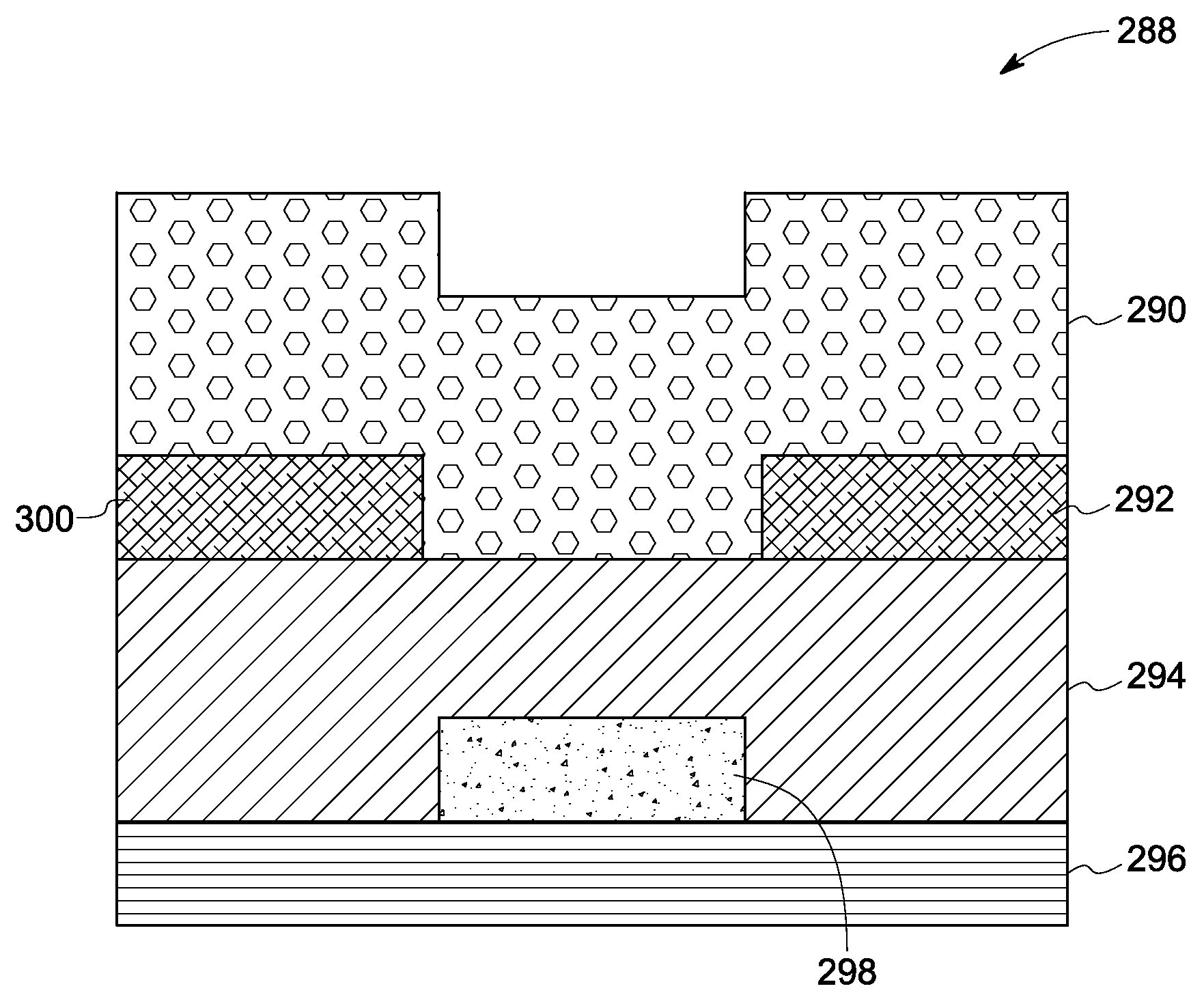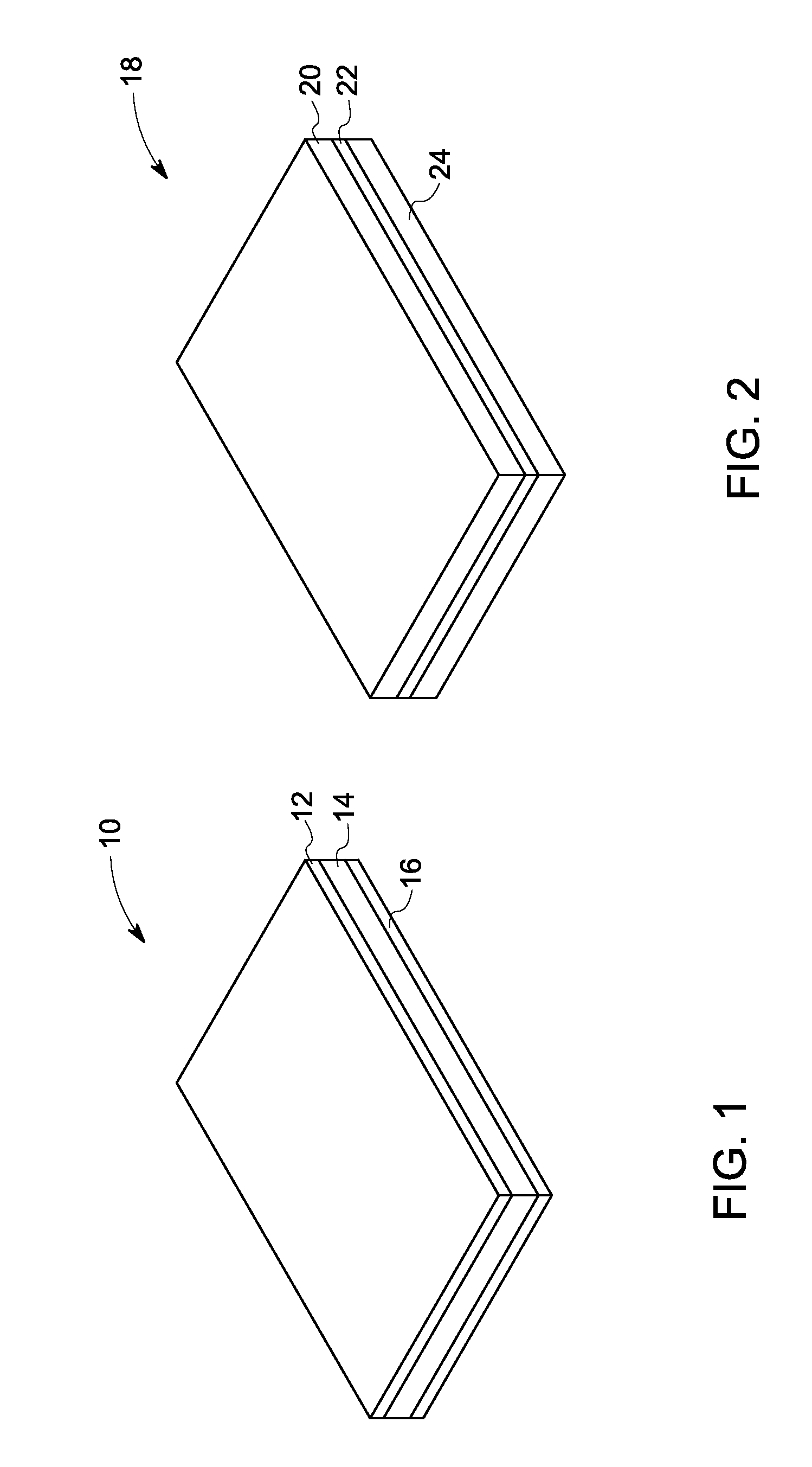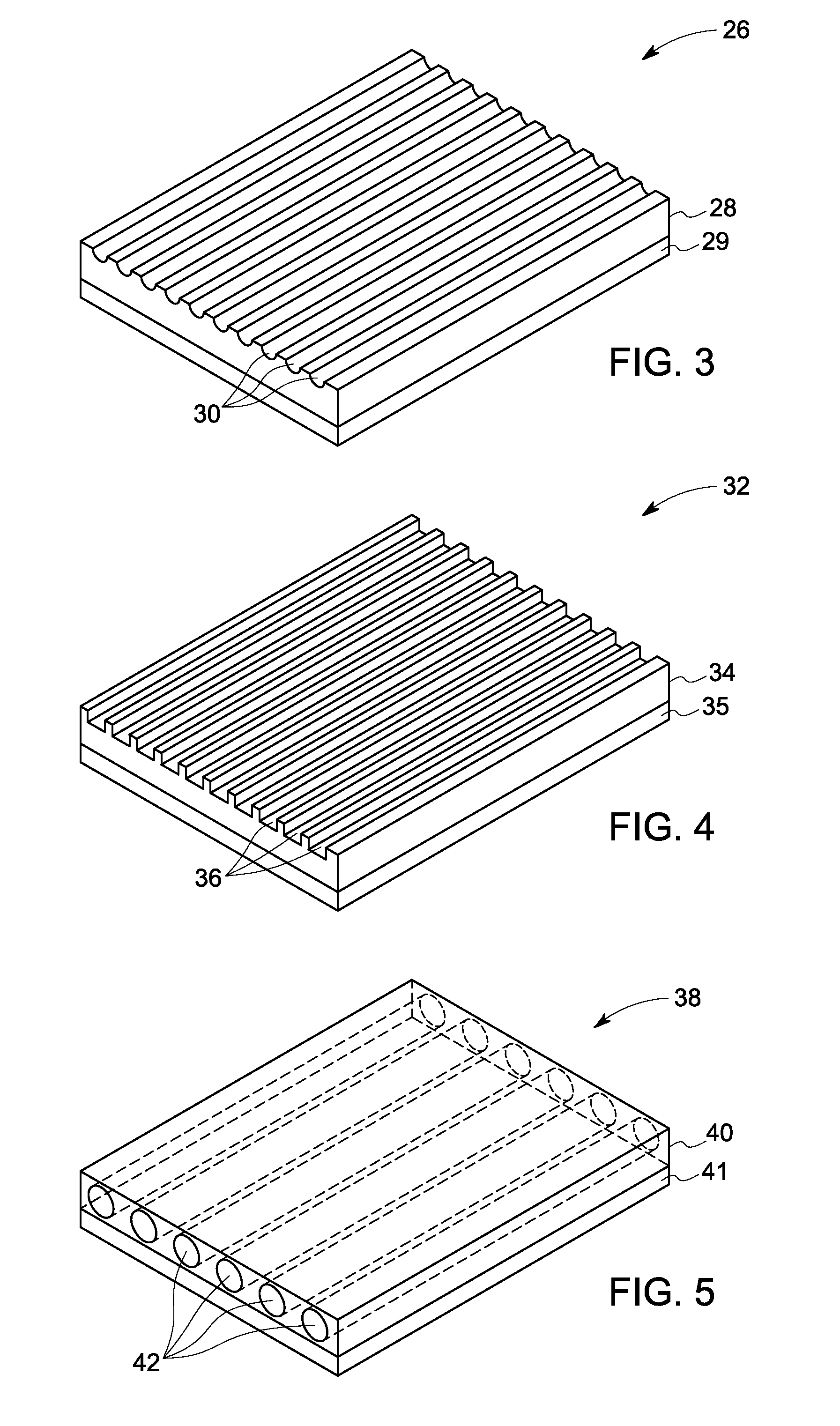Thermal management article and method
a technology of thermal management and articles, applied in the field of thermal management articles and methods, can solve the problems of increasing the size and/or footprint of the module, generating noise from fans or piezoelectric devices, and adversity,
- Summary
- Abstract
- Description
- Claims
- Application Information
AI Technical Summary
Benefits of technology
Problems solved by technology
Method used
Image
Examples
example 1
[0168]A sample of poly ((N,N-ethylmethyl aminomethyl)styrene) (PS-Amine) is synthesized as follows: A solution of an isomeric mixture of poly(3-chloromethyl)styrene and poly(4-chloromethylstyrene) (2 grams, 13.2 millimoles) and N-ethylmethylamine (CAS No. 624-78-2, 11.8 grams, 200 millimoles) in 25 milliliters of toluene is stirred at room temperature for 5 days. The reaction mixture is a slurry containing precipitated solids. The reaction mixture is transferred to a separatory funnel and diluted with toluene. The organic phase is washed twice with 1 weight percent aqueous NaOH solution, twice with water, and the solvent is removed under vacuum. The tacky, white solid residue is dissolved in methanol and precipitated into water in a blender. The collected solid is air-dried, and then dried in a vacuum oven at 50 degrees Celsius to afford the reaction product of poly (N,N-ethylmethyl aminomethyl)styrene.
example 2
A Transparent Organic Light-Emitting Device Fabrication
[0169]Preparation of Green / Red / Blue OLED
[0170]Step 1a: Preparation of a Green-Color Organic Light-Emitting Device (green OLED).
[0171]A glass substrate is coated with a layer of indium tin oxide. Indium tin oxide is commercially available from Applied Films, Inc. (Evanston, Ill.). The coated substrate is exposed to ultraviolet radiation. A layer (ca. 60 nanometers) of poly (3,4-ethylendioxythiophene / polystyrene sulfonate (PEDOT:PSS) (BAYTRON® is commercially available from Bayer Corporation (Pittsburgh, Pa.)), is deposited onto the indium tin oxide coated substrates via spin-coating to form an intermediate. The intermediate is baked for 1 hour at 180 degrees Celsius in air to form a PEDOT layer. A layer (ca. 70 nanometers) of a green light-emitting polymer (LEP) (LUMATION® 1304 is commercially available from Dow Chemical (Midland, Mich.)) is spin-coated onto a surface of the PEDOT layer to form a green LEP layer. The samples are ...
example 3
Display Layer Fabrication
[0184]A 500 nanometers thick layer of polycarbonate having a percentage transparency of 80 at a wavelength of 550 nanometers is used as the substrate. Light emitting devices, as prepared in step 3 of Example 2, are secured to the polycarbonate layer to form pixels on a display layer. Each pixel comprises a light emitting device comprising a red, green, and / or blue OLED and a TFT. The TFT is operably coupled with the OLEDs. The assembly is aligned such that the color emitted consists of the light emitted by the display layer based on the on-off condition of the TFT controllers. The edges of the assembly are sealed with the NORLAND ADHESIVE to provide mechanical integrity.
PUM
| Property | Measurement | Unit |
|---|---|---|
| thickness | aaaaa | aaaaa |
| thickness | aaaaa | aaaaa |
| visible wavelength range | aaaaa | aaaaa |
Abstract
Description
Claims
Application Information
 Login to View More
Login to View More - R&D
- Intellectual Property
- Life Sciences
- Materials
- Tech Scout
- Unparalleled Data Quality
- Higher Quality Content
- 60% Fewer Hallucinations
Browse by: Latest US Patents, China's latest patents, Technical Efficacy Thesaurus, Application Domain, Technology Topic, Popular Technical Reports.
© 2025 PatSnap. All rights reserved.Legal|Privacy policy|Modern Slavery Act Transparency Statement|Sitemap|About US| Contact US: help@patsnap.com



